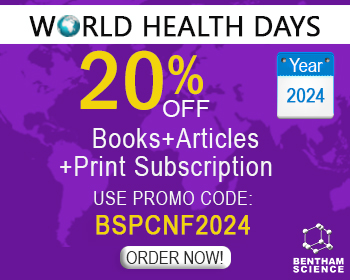Abstract
Depression is a widespread and persistent psychiatric disease. Due to various side effects and no curative treatments of conventional antidepressant drugs, botanical medicines have attracted considerable attention as a complementary and alternative approach. The pathogenesis of depression is quite complicated and unclear. Metabolomics is a promising new technique for the discovery of novel biomarkers for exploring the potential mechanisms of diverse diseases and assessing the therapeutic effects of drugs. In this article, we systematically reviewed the study of botanical medicine for the treatment of depression using metabolomics over a period from 2010 to 2019. Additionally, we summarized the potential biomarkers and metabolic pathways associated with herbal medicine treatment for depression. Through a comprehensive evaluation of herbal medicine as novel antidepressants and understanding of their pharmacomechanisms, a new perspective on expanding the application of botanical medicines for the treatment of depression is provided.
Keywords: Antidepressants, phytochemicals, herbal formula, metabolomics, metabolic biomarkers, assessment.
[http://dx.doi.org/10.1038/475027a] [PMID: 21734685]
[http://dx.doi.org/10.1002/mpr.138] [PMID: 12830306]
[http://dx.doi.org/10.2174/1381612824666180727123950] [PMID: 30051783]
[http://dx.doi.org/10.1016/j.cbi.2016.03.028] [PMID: 27041073]
[http://dx.doi.org/10.1111/nyas.13385] [PMID: 28632966]
[http://dx.doi.org/10.1002/ptr.5240] [PMID: 25331169]
[http://dx.doi.org/10.1111/nyas.12775] [PMID: 26014591]
[http://dx.doi.org/10.1038/srep21320] [PMID: 26883691]
[http://dx.doi.org/10.1007/s11306-013-0610-1]
[http://dx.doi.org/10.1016/j.jalz.2015.12.008] [PMID: 26806385]
[http://dx.doi.org/10.1007/s12035-016-0038-5] [PMID: 27501805]
[http://dx.doi.org/10.2174/1381612824666180727114134] [PMID: 30051781]
[http://dx.doi.org/10.1074/mcp.M112.021816] [PMID: 23111923]
[http://dx.doi.org/10.1056/NEJMra073096] [PMID: 18172175]
[http://dx.doi.org/10.1016/j.cca.2009.11.003] [PMID: 19913000]
[http://dx.doi.org/10.1016/j.janxdis.2008.08.004] [PMID: 18819774]
[http://dx.doi.org/10.1002/rcm.4809] [PMID: 21080506]
[http://dx.doi.org/10.1016/S0165-1781(01)00282-7] [PMID: 11549400]
[http://dx.doi.org/10.1046/j.1365-2362.1999.00522.x] [PMID: 10469164]
[http://dx.doi.org/10.1016/j.pbb.2013.12.013] [PMID: 24355550]
[http://dx.doi.org/10.1038/s41398-018-0183-x] [PMID: 29991685]
[http://dx.doi.org/10.1016/0165-0327(95)00025-I] [PMID: 8550953]
[http://dx.doi.org/10.1021/acs.jproteome.6b00577] [PMID: 27599184]
[http://dx.doi.org/10.1111/pcn.12299] [PMID: 25825158]
[http://dx.doi.org/10.1176/ajp.139.10.1315] [PMID: 6289682]
[http://dx.doi.org/10.1016/j.jpba.2016.06.019] [PMID: 27371920]
[http://dx.doi.org/10.1080/19768354.2010.528192]
[http://dx.doi.org/10.3390/molecules21030260] [PMID: 26927040]
[http://dx.doi.org/10.1155/2018/1361402] [PMID: 29607310]
[http://dx.doi.org/10.1016/j.lfs.2015.01.006] [PMID: 25634110]
[http://dx.doi.org/10.1016/j.jpba.2016.02.001] [PMID: 26874256]
[http://dx.doi.org/10.2147/NDT.S167448] [PMID: 30013348]
[http://dx.doi.org/10.1007/s003950070035] [PMID: 11099163]
[http://dx.doi.org/10.1038/jcbfm.1990.17] [PMID: 2298830]
[http://dx.doi.org/10.1016/j.lfs.2014.08.006] [PMID: 25139831]
[http://dx.doi.org/10.1016/S0301-0082(02)00015-1] [PMID: 12169298]
[http://dx.doi.org/10.1038/s41598-017-10391-1] [PMID: 28852120]
[http://dx.doi.org/10.2147/NDT.S161351] [PMID: 29713170]
[http://dx.doi.org/10.1016/j.bbr.2016.08.001] [PMID: 27498146]
[http://dx.doi.org/10.1016/j.jep.2016.12.028] [PMID: 27993636]
[http://dx.doi.org/10.1016/S0893-133X(00)00102-0] [PMID: 10882845]
[http://dx.doi.org/10.1016/j.molcel.2004.06.023] [PMID: 15225555]
[http://dx.doi.org/10.1021/pr300891v] [PMID: 23110693]
[http://dx.doi.org/10.1016/j.phytochem.2008.09.010] [PMID: 18951592]
[http://dx.doi.org/10.1016/j.aca.2008.03.056] [PMID: 18442518]
[http://dx.doi.org/10.1016/j.chroma.2019.03.056] [PMID: 31047662]
[http://dx.doi.org/10.3390/molecules20046700] [PMID: 25884551]
[http://dx.doi.org/10.1248/bpb.29.2304] [PMID: 17077534]
[http://dx.doi.org/10.1002/bmc.3923] [PMID: 28009452]
[http://dx.doi.org/10.1016/j.fct.2009.02.002] [PMID: 19425187]
[http://dx.doi.org/10.1016/j.phrs.2009.12.007] [PMID: 20036742]
[http://dx.doi.org/10.1039/C5FO00695C] [PMID: 26328874]
[http://dx.doi.org/10.1016/j.jep.2010.01.016] [PMID: 20079416]
[http://dx.doi.org/10.1016/j.jep.2011.05.016] [PMID: 21640181]
[http://dx.doi.org/10.1111/j.2042-7158.2011.01412.x] [PMID: 22420663]
[http://dx.doi.org/10.1016/j.jep.2019.01.018] [PMID: 30708033]
[http://dx.doi.org/10.1016/j.jep.2011.06.024] [PMID: 21718771]
[http://dx.doi.org/10.1002/ptr.4805] [PMID: 22975930]
[http://dx.doi.org/10.1016/j.jchromb.2015.12.026] [PMID: 26733091]
[http://dx.doi.org/10.1007/s11655-012-1092-0] [PMID: 22610956]
[http://dx.doi.org/10.1016/j.jpba.2011.02.013] [PMID: 21398066]
[http://dx.doi.org/10.1016/j.jchromb.2017.08.003] [PMID: 28886478]
[http://dx.doi.org/10.1016/j.jchromb.2016.06.044] [PMID: 27398633]

























